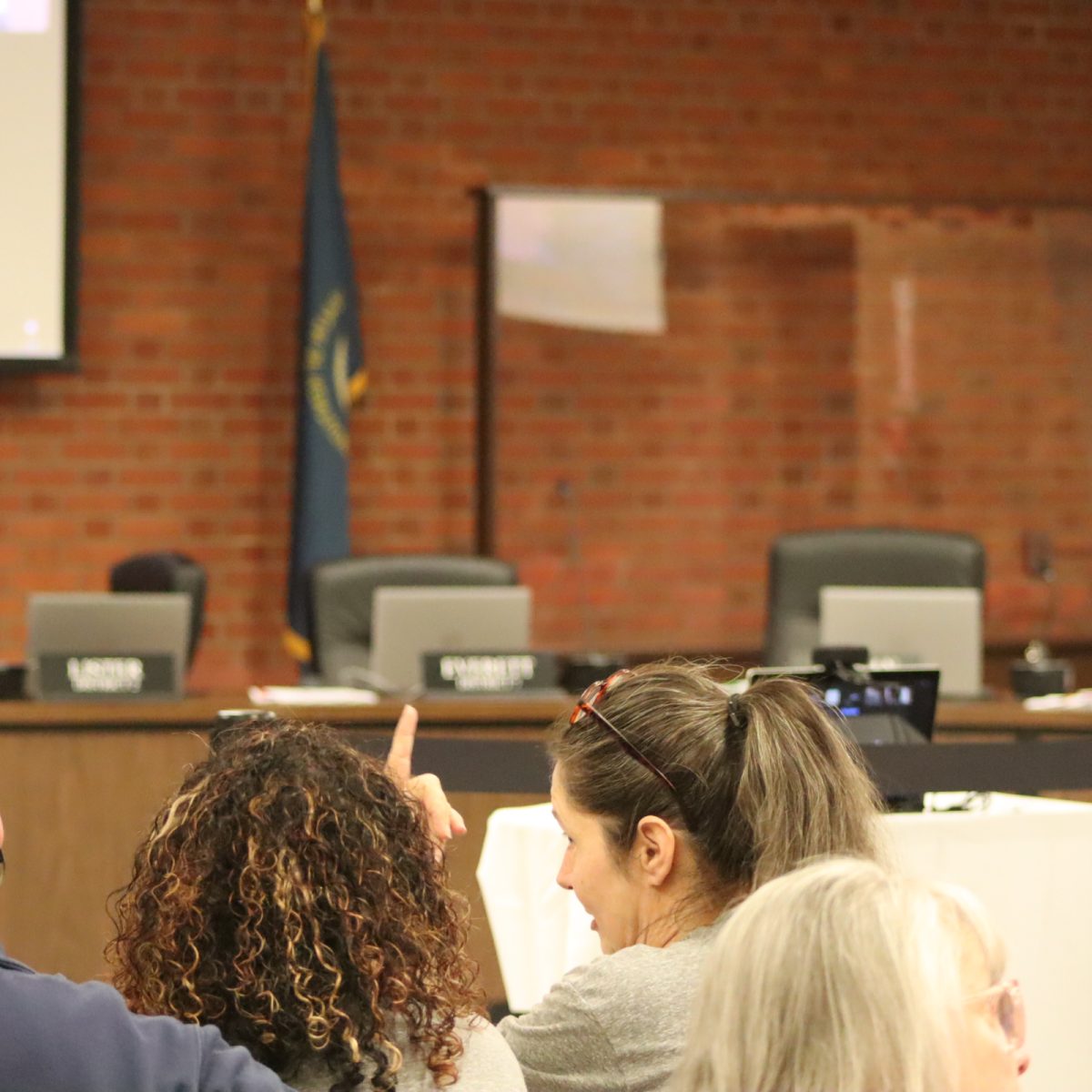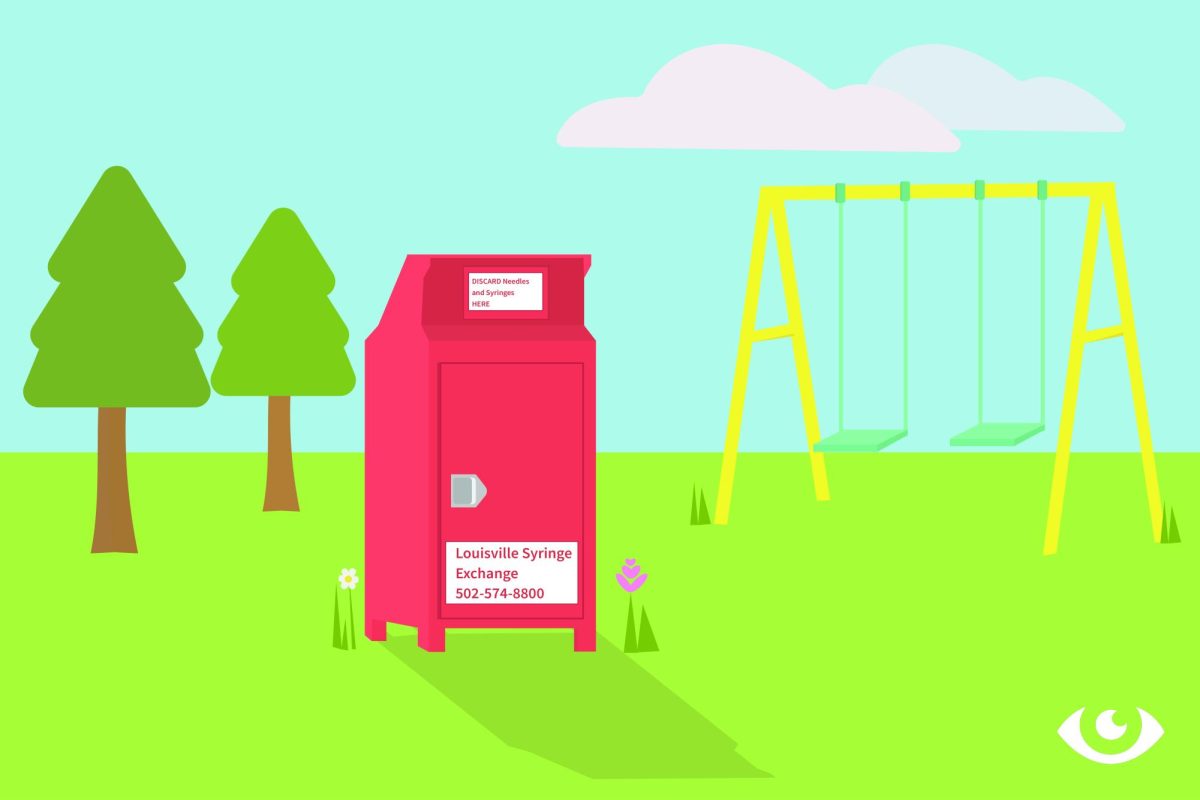For five months, Ms. Veronica Munn (Humanities) awoke at quarter of four every morning. Bleary-eyed, she and her husband ate breakfast, said goodbye to their restless dogs, and got in the car for a two-hour drive. More than once, Ms. Munn worried throughout the entire journey that they would be late to work despite their early start, which was meant to accommodate a drive that had once taken them a grand total of twenty minutes.
Ms. Munn used to walk her dogs in the mornings, and she used to get enough sleep. She used to be able to offer her time after school for various activities, to do her regular shopping in the East End, and to arrive home with plenty of time for chores, grading, and a social life.
But for what seemed like an eon after the closing of the Sherman Minton bridge, Ms. Munn could no longer do any of those things—for the simple reason that her home was now two hours from the heart of Louisville.
“We live near Huber’s Farm all the way in Indiana, up 64, down 150 about five miles, and in about a mile and a half,” Munn said. “Before the bridge closed, it took us about fifteen minutes to get to Manual. When the bridge closed, all that changed.”
When a 2 ½-inch crack was discovered in a load-bearing section of the bridge in early September, Indiana governor Mitch Daniels made the decision to close the bridge entirely. It reopened just about a month and a half ago on Friday, February 17.
“Time changed, and stress, too. It was very stressful,” Munn said. “We had to come up with creative ways of getting to 65 at first, because everything was so blocked, and people didn’t know which way to take or where to go or what to do. My husband went through so many parking lots, and moved barricades, went up curbs, in an effort to get us here on time.”
Ms. Kathleen Geary (Math), who lives in New Albany, Indiana, is a friend of Ms. Munn’s and another teacher who dealt with an unbearably lengthy commute.
“I can get from my house to school in eighteen minutes if I can use the Sherman Minton bridge. When the Sherman Minton bridge was closed, however, it took me anywhere from an hour to an hour and forty-five minutes to get to school,” she said. “I have two dogs, and they always wake up at 4:00, which is no big deal, ‘cause I can take them for a walk, and play with them before I get ready for school. So when the bridge finally opened up again, that was the first time I got to go for a walk in like five months before school. They like that morning air.”
In addition to coping with early morning changes, Ms. Munn also had to deal with the activity that was sapped from many parts of her life by the bridge closing. She and her husband switched from home cooking to takeout, gave up morning walks with their dogs like Ms. Geary did, stopped shopping at their favorite stores and frequenting their favorite restaurants in Louisville, and saw their family—children and grandchildren—less and less.
“There were a lot of ripple effects. It was a headache,” she said. “We were just exhausted all the time from that constant stress and frustration and worry, and sitting in traffic, and getting up so early. It just took a toll. It took its toll on us.”
The day before the bridge reopened, Ms. Munn’s husband had maneuvered their car through the usual tough traffic on their way down i-65 toward Louisville. Out of the blue, a semi came barreling down the highway. Ms. Munn described the experience as in a movie, the scene slowing down as the truck flew toward her and her husband. It missed them by inches.
“I was really frantic,” she said. “It was dangerous, I think, traveling… 65 was pretty treacherous, and with all those trucks—I mean, some days it would be almost all trucks that we would see, and the semis, and they move so fast. I don’t like 65 anyway. And they just would come at you from all over, and people would cut in, and you could see the road rage building and building.”
After months of being burdened by the bridge-under-construction, Ms. Munn wasn’t sure if it had all really been necessary. “I wondered, since the cracks had been there for so long, why didn’t they just make it that trucks didn’t go over? Just have the cars coming over. Or maybe try to divert interstate traffic in some way and just have commuters, you know, local traffic,” she said. “And I know the people who worked on the bridge did it in a very timely manner and worked very hard, but closing an interstate bridge like that… A lot of police increased, and a lot of problems on the road, and backups because of that, too. It began to feel like Los Angeles instead of Louisville.”
“When the bridge was finally open, I bought doughnuts for the whole staff,” Ms. Geary said. “Because you can’t imagine, it’s like three hours a day I’m saving. I can have a personal life again. I can talk to people.”
Understandably, Ms. Munn could hardly describe her feelings of relief. “No more takeout,” she said, laughing.





